County Tax Trends – Some Perspective
After several years of calling for flat millage, it is time to shift our attention to the tax dollars themselves.
Budget Hearings
Monday, 9/9 at 6:00pm
Monday 9/23 at 6:00pm
There is an old saying that “nobody washes a rental car”. When you own, it is more in your interest to maintain the value of your asset. Similarly, if a third party is paying for something that benefits you, you may not think about the “value proposition” or how much it costs because it is not your purchase decision. This is why health care inflation is high for procedures where a third party (government or insurance company) pays, but low for out of pocket items like plastic surgery or laser vision correction where you can choose the best value from competing practitioners.
When a government spends money, if it is directly tied to your tax bill you pay attention, but when the money comes from somebody else, “what difference does it make?”.
Spending at the federal level has been disassociated with individual income taxes for some time. With almost 40% of the federal budget coming from borrowed money, and less than half of the citizens paying federal income tax, it is hard to get too upset over another $10B for this or that, as it isn’t going to come out of your pocket any time soon. Even if it does concern you, federal taxation is difficult for a citizen to impact, given the way our Congress works.
Similarly, at the state level in Florida, with no income tax, a sales tax that is not out of line with other states, and much of state revenues coming from tourist taxes, state spending has little impact on the average citizen.
At the county and city level though, we are all aware of our property taxes (or our rent if we don’t own property). Over the years this link has been weakened at the county level as much spending is supported by user fees and “intergovernmental” revenue, which includes federal and state grants, and revenue sharing from sales tax, gas tax, and other sources. Currently only about 35% of county revenues (excluding fund balance) come from property taxes.
It is the changes in tax rates or taxes collected from you that you notice, not necessarily the level of county spending.
As the property valuations accelerated and hit their peak in 2007, tax rates were stable or declining, and the “wealth effect” associated with rapidly appreciating property masked the fact that taxes collected were skyrocketing. The adopted countywide tax in 2003 was $408M, but climbed to $689M by 2007. This was an increase of 13%, 16%, and 19% in the years 2005, 2006 and 2007 respectively, in a time when the millage or tax rate was decreasing.
The millage rate is widely reported. You see it on your TRIM notice as well as in the press coverage of the budget process. It wasn’t until this rate started soaring that people’s attention was drawn to it.
For the 2010 budget, adopted in September 2009, the millage increased by 15%. Many thought this outrageous, as our neighboring counties were booking much smaller increases, yet the countywide adopted tax dollars only increased by a tiny 1.3%. This outrage was widespread however, affecting the business community, realtors, grassroots groups and others, and led to the formation of TAB by the following year.
In 2011, in spite of some public opposition, the commissioners raised the millage yet again by 9%, but for 2012 – 2014 it was essentially flat. Taxes collected in those three years declined slightly until this year when a 3.9% increase (a $23M increase, most going to the Sheriff). TAB argued for flat millage during this period, and accepted another year of 4.7815, in spite of the increase in dollar amount. It is expected that this rate will be adopted during the budget hearings this month.
Governments do not typically throttle their spending voluntarily. Taxes and spending need to be scrutinized by the public, and objections raised when they get out of line. In a downturn (both in property valuation and lately in federal grants), it is in the nature of government to try to maintain spending levels rather than adjust them to match economic conditions if possible. Otherwise, programs have to be cut, layoffs are possible, and the recipients of government spending begin to organize.
We are now at a turning point. Next year, if valuations continue to rise, we will focus on tax dollars rather than millage, and argue that increases in spending should not exceed population growth and inflation measures. A millage reduction would be justified under that scenario. If valuations stay flat or decline, then we shall also oppose any millage increase.

County Proposes No Change to Millage, $23M Tax Increase
The July budget line item is included in the next scheduled BCC Meeting on Tuesday, July 16, which starts at 9:30am. It is item 5G-1 on the agenda and will likely be the last item of the morning session.
The first county budget proposal for fiscal year 2014, presented at the June 11 meeting, called for a millage increase to 4.8164 (up from the current 4.7815) and $25M in new ad valorem tax revenue – mostly to fund new spending proposed by the Sheriff.
While not definitive, the drift from the dais was that they would like to see flat millage (Abrams, Burdick, Valeche) and more spending on priorities like road repair and less of an increase to PBSO. Some commissioners, particularly Shelley Vana, didn’t want to be “penny wise and pound foolish” and thought that flat millage should “no longer be the holy grail”.
So we were pleasantly surprised to see that the July Budget Package is introduced under separate cover by Administrator Bob Weisman with
down to the current year 4.7815.
During the month interim, Mr. Weisman and staff were able to achieve this by:
- Seeing an additional $2.6M from increased property valuations
- Allocating an additional $2M from the proceeds of the $26M Mecca Farms sale into 2014
- Gaining $859,000 in concessions from the Sheriff – which is half of the remaining shortfall with flat millage.
He was also able to increase funding for some priorities, including:
- $1.6M for neighborhood road repaving
- $270K for the Palm Beach sand transfer plant
- $100K in additional funds for the Business Development Board
With the new assumptions, the flat millage proposal will generate a countywide tax of $623M, up $23M from the 2013 fiscal year, slightly less than the June proposal. As seen in the chart, this is a visible uptick from previous years, and is the highest tax collected since 2008, when the millage was at a low point of 3.7811.

Assuming that the valuation increase this year is a start of a trend, flat millage will no longer be acceptable going forward and we will be expecting substantial reductions. That said, the current proposal of flat millage appears to be a genuine attempt to satisfy the pent up spending demand, particularly for salary increases for county staff while not overly gouging the taxpayer. Historically, overall county spending is approaching a “TABOR” (population and inflation) projection from a 2003 baseline. (See Determining County Budget Growth – Why the Baseline Year Matters )
Assuming the BCC accepts the flat millage proposal, we do not expect to be calling for any taxpayer actions during this budget cycle.
Determining County Budget Growth – Why the Baseline Year Matters
For the last few years, whenever the county budget has been presented, growth has been charted based on the year 2003. Numerical comparisons were made to 2007 though, and this year even the charts are based on 2007. Does this make a difference? What do the two baseline years tell us about the growth in spending and how the county staff wants you to look at it?
As you may remember, the middle of the last decade saw a real estate “bubble”, where average properties in the county became greatly inflated – sometimes doubling in only a few years. The year 2007 represented a leveling off of the valuation increases, with values 83% higher than they were in 2003. Valuations climbed a little more in 2008 (to 93% of 2003), and then began a rapid decline to the bottom in 2012 at 43% of 2003. Today’s levels are about 48% of the 2003 values.
Since county property tax follows property valuations, as you would expect, the county’s revenue and spending exploded during this runup period. In the four years from 2003 to 2007, the overall county-wide “ad valorem equivalent” (a measure of spending) rose 42%, led by Fire/Rescue which saw its spending almost double (90% increase). By adopting 2007 as their “base year”, the county would like you to overlook this rapid growth prior to that, and imply that the relatively flat spending since 2007 is “normal”.
Consider the following chart, based on 2003:
 Chart 1 – 2003 Baseline
Chart 1 – 2003 BaselineThe dashed orange line shows the real estate “bubble”. Note that the Fire / Rescue spending climbed the “bubble”, but then stayed at the higner level as the bubble burst. The Sheriff’s budget did a similar thing, although their spending lagged a little. Both are up over 80% since 2003. Spending on the “rest of the county” (blue line) – including engineering, Palm Tran, community services, information systems, parks and recreation, and the other constitutional officers was the big loser, as the “total ad-valorem equivalent” (the dark green line) – which includes all county functions stayed as high as the taxpayers would accept, up 45% and ending at about where the valuations did. The dashed green line represents “TABOR”1, or the increase in spending that would be justified by changing population and inflation. Interestingly, the “total ad-valorem equivalent” ends about on the TABOR line, even though spending greatly exceeded it in the middle years.
Now consider the next chart which uses 2007 as the baseline year:
 Chart 2 – 2007 Baseline
Chart 2 – 2007 BaselineUsing the “bubble” spending levels as a reference, it appears that “total ad-valorem equivalent” is flat – exceeding the 2007 level by only 2%, and well below “TABOR”, and the county department spending has actually declined by 16%. Even the grossly inflated PBSO budget looks like it is converging on the “TABOR” line.
If you were the county administrator and you wanted to make the best case for fiscal responsibility, which chart would you use?
Baselines do matter.
There are many external factors that should determine the “appropriate” level of spending of tax dollars, such as the health of the overall economy, the declining average income in the county, the “artifacts” in the valuation numbers from foreclosure dynamics and demand for real estate by third party investors. From a strictly historical perspective however, most would agree that the spending growth in the years leading up to the bubble were wild and crazy. The great recession has brought some of the spending back down to earth as measured by inflation and population growth as shown on chart 1, with the notable exceptions of PBSO and Fire/Rescue.
With a 2003 baseline, county spending today looks almost responsible, and the case can be made without changing the baseline to obscure the rapid growth of government leading to the bubble. We hope that county staff does not plan to rewrite history.
1. TABOR is an acronym for “Taxpayer Bill of Rights”, a legislative approach tried is some states to control spending growth by limiting it to the inflation rate and population growth.
2014 County Budget – What To Expect
Next week, county staff will be unveiling their 2014 budget proposal to be discussed at the June 11 budget workshop at 6pm in the Commission Chambers. TAB will analyse the proposal when it is published, but what do we know now and what can we surmise?
- Property valuations are up this year by 3.7%, from $125.1B to $129.7B, according to Property Appraiser Gary Nikolits. See Tax base grows in Palm Beach County, 34 of its 38 cities.
- Using last year’s millage rate of 4.7815, this would produce approximately $620M in county-wide ad-valorem revenue, up about $20M over last year’s budget.
- The Sheriff’s Budget Proposal is requesting $510M – up $38M or 8.3% over last year. This request includes a 2% across the board “cost of living” increase for all employees, in addition to raises already included via contract. (The personal services budget is up over 6%). It also includes $3M targeted for mandated expenses associated with Obamacare.
- Interest from the county’s investments are down about $10M.
- The Solid Waste Authority (whose governing board is made up of the current county commissioners), gave their employees a 3% increase already (pre-budget), as have some municipalities. (See: Raises approved for Solid Waste Authority employees, after three years of frozen pay) It would seem likely that Administrator Weisman would like to do the same for his employees.
- Reserves have been spent down slightly in recent budget years and both county staff and county Comptroller Sharon Bock would like to begin rebuilding these reserves.
- Infrastructure spending, particularly on roads and bridges, has been deferred in recent years and is a priority for some commissioners.
So what can we gather from all this?
Although many would suggest that rising valuations present an opportunity to lower millage (much as millage has been raised as valuations declined), the combination of upward pressure on spending for raises and infrastructure and reserve replenishment, combined with lower revenue from investments, would seem to suggest the opposite. The Sheriff’s request alone will swamp the additional revenue expected from higher valuations.
We have turned a corner, and the valuation declines that have driven the budget since 2008 have bottomed and are now rising. This suggests a different dynamic. Besides the points already mentioned, you should expect that many special interest groups will come forward to claim a piece of the “windfall”, making for a possible feeding frenzy.
TAB believes that in recent years, the county has done a reasonable job in facing economic reality, and the additional revenue this year at flat millage could be used to relieve some of the pressure. Raising the millage rate in the face of improving conditions would be unwise however. If we have truly turned a corner, there will be revenue available in the coming years and some gratification should be deferred.
County Administrator Bob Weisman’s Outlook for 2014 Budget
On Thursday March 28, the County Budget Task Force of the Town of Palm Beach, a TAB coalition partner, chaired by Mayor Gail Coniglio, hosted County Administrator Bob Weisman, OFMB Director Liz Bloeser and Budget Director John Wilson for some insight into the coming budget cycle.
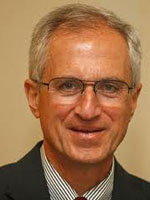
Robert Weisman
After several years of increasing millage, last year was significant in that the millage was unchanged, and the slight (0.7%) uptick in valuations after 5 years of declines yielded a few million more in revenue. Although it is still early, the departments have not done their budget estimates, and the Sheriff (2/3 of the ad-valorem county-wide budget) will not make his request until May, Mr. Weisman intends to seek flat millage once again. (Note: With the property appraiser’s early forecast at + 1.5%, that could generate an additional $9M in property taxes.)
In a wide-ranging presentation, the Administrator highlighted some situations that have bearing on the 2014 budget:
- The communications workers and transit workers (Palm Tran) unions were offered a small increase for September but are holding out for more. The county does not plan to change their offer.
- The Palm Tran worker’s pensions are in a separate plan from FRS (Florida Retirement System) used by the rest of the county, and are underfunded. The county is on the hook for $9M ($3M per year for three years) to increase its funding level.
- His general instruction to staff departments is to hold the line – no refill of vacant positions again this year.
- The Sheriff (as usual) is the biggest variable, spending $400M (mostly on employee pay and benefits), compared to $270M for the county staffs.
- Fire Rescue is about to conclude a new contract next month, for two years with no increases and 3% in the third year. New hire salaries will be reduced going forward, although there have been no new hires in four years. The contract will be less expensive than the previous period.
- Clerk Sharon Bock, who is in charge of the county investment portfolio has shifted much of the balance from relatively high performing instruments (primarily mortgage backed Frannie Mae securities) to short term bonds. This reflects a changing outlook on the future economy (presumably higher interest rates), but will present a shortfall in portfolio earnings this year.
- The Mecca Farms deal with the South Florida Water Management District appears to be dead. The $30M offered is less than the property is worth, and conditions have changed in two years. With Vavrus likely to be developed next door, Mecca may be worth something closer to the $60M that was paid for it, and several developers have approached the county to discuss options.
- Overall debt levels (and carrying costs) are declining.
- Supervisor of Elections Susan Bucher has under spent her budget and returned a million or so.
- The sequestor will affect the county in two areas – Head Start and Senior Services (meals, etc.) By eliminating bus service for the Head Start students, they can absorb the cuts without reducing the program.
- A relatively new expense going forward is $5M per year for the Homeless Resource Center, off-budget at inception but strongly supported by the Board of Commissioners.
The meeting was upbeat and provided a good snapshot at this point in the cycle, and was much appreciated by the task force members.
Some dates to keep in mind: On May 1, the Sheriff will deliver his budget request. On June 1, the Property Appraisor will have his estimate of valuations. Then on June 11, the first budget workshop will take place at 6:00pm in the commission chambers, 301 North Olive.
TAB co-hosts PBG Council Candidate Forum
On February 28, PBG Watch, along with the South Florida 912 and the Palm Beach County Tea Party, Taxpayer Action Board and the Palm Beach Gardens Residents Coalition hosted a candidate forum for City Council election, featuring former Mayor David Levy and challenger attorney James D’Loughy..
TAB Co-Sponsors PBG City Council Candidate Forum
Candidate Forum
Join us for an evening of in-depth discussion of city issues with the candidates for the March 12th election in Group 4. The seat has been vacant since former Mayor (and current candidate) David Levy resigned to run for the County Commission.
Moderated by Daniel Martell, President and CEO, of the Economic Council of Palm Beach County.
Thursday, February 28, 2013
7:00 PM
Gardens Branch, Palm Beach County Library *
11303 Campus Drive
Palm Beach Gardens, FL 33410
The candidates are:
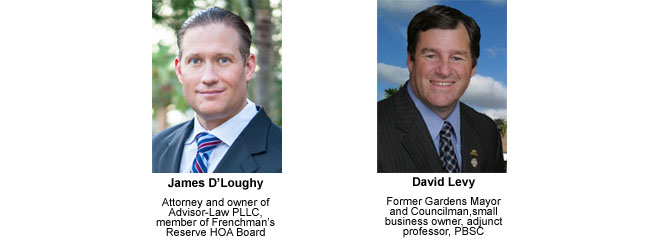
For information, call 561-972-8789
This event is jointly sponsored by:
Palm Beach County Tea Party
Palm Beach Gardens Residents Coalition
PBGWatch
South Florida 912

* This program is not sponsored/endorsed by the Palm Beach County Library
Candidate Biographies
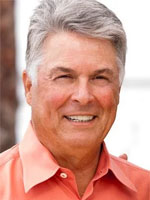
David Levy
Florida native David Levy was born in 1960 and is the owner of environmental engineering firm Southeast Remediation Technnology, and an adjunct professor in environmental geology at Palm Beach State College. He received a B.S in Geology from Florida State University, and a M.S. in Geological Services from Virginia Polytech.
He is the former Mayor of Palm Beach Gardens, and was a City Councilman from 2004 through 2012. County-wide, he chaired the League of Cities Environmental Committee, the Regional Hazardous Material Oversight Committee and the Water Resources Task Force, as well as participating with Workforce Alliance, the Biotech Land Advisory Board, and the Loxahatchee River Management Coordinating Council.
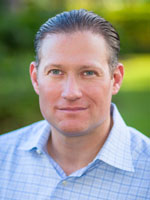
James D’Loughy
James D’Loughy, is a long-time resident of Palm Beach Gardens. A lawyer of over 17 years, James is the founder of AdvisorLaw PLLC, a legal firm that represents clients in complex business matters. He helps individuals and small businesses alike protect their assets, resolve conflicts, and plan for a rainy day.
James’s knowledge of politics is informed by a degree in political science as well as experience working on Capitol Hill. Having worked on corporate transparency and compliance issues, James seeks to bring a new level of ethical governance to the Palm Beach Gardens City Council.
James lives with his wife, Anne Louise, his two daughters, Fredericka and Wilhelmina, and his newborn son, Maximilian, in Frenchman’s Reserve, where he volunteers his time as a member of the community’s governing body.
Moderator Biography

Daniel Martell
Daniel Martell is President and CEO of the Economic Council of Palm Beach County, a not-for-profit, non-governmental, non- partisan organization established in 1975. Its members come from all geographic areas of the county, represent all major business categories and encompass all sizes of businesses. Its mission statement is simply, “Create an environment to help business prosper.”
Mr. Martell came to the Economic Council of Palm Beach County from local sugar company, Florida Crystals Corporation as Vice President of Real Estate. His responsibilities at Florida Crystals included overseeing local government affairs, corporate land development, and real estate investments.
Beginning his career as the Director of Government and Political Affairs for the Gold Coast Builders Association, he was responsible for the regulatory and political issues confronting the home building industry in Palm Beach and Broward counties. He received his undergraduate degree in Political Science from the University of Florida, Juris Doctor from the Shepard Broad Law Center at Nova Southeastern University, and obtained a Certificate of Corporate Finance from Cornell University in 2011.
Commission and School Board Candidate Forum
On October 1, TAB, along with the South Florida 912 and the Palm Beach County Tea Party, hosted a candidate forum for County Commission district 1 and School Board district 1. Moderated by Steve Rosenblum of the blogTalkRadio show “CRF Radio with Steve and Daria”, the candidates were asked a set of questions about current issues facing their respective bodies, some of which proved to offer a real choice between the candidates. Present for the forum (and keeping them honest) was outgoing Commissioner Karen Marcus, who we thank for her service, and several of Mayor Levy’s councilmen, Bert Premuroso and Eric Jablin.
The School Board event matched former Minnesota Commissioner of Education Christine Jax against long term PBC teacher and principal Mike Murgio.
When asked about how to fix the general perception that the quality of local schools are poor and an impediment to attracting new businesses or hiring from out of the state, Mr. Murgio was defensive about it and claimed that the schools were “better than you think”, and that what we need is better marketing. Ms. Jax agreed that marketing was needed, but also pointed out areas of weakness, particularly at the high school level, that need action. On “high stakes testing”, Christine was firmly in favor of measurements and against “social promotion” while Mike narrowly defined it in terms of the vocational certifications achieved by students at Inlet Grove when he was its principal. Whether graduates can pass their nursing certification is important, but he did not address the wider measurement of academic performance. On school choice, Christine favors private for-profit charter schools where Mike does not. On the subject of the School System Inspector General (as opposed to the independent county OIG), Mike was hopeful that the current IG relationship can work, but would have accepted OIG oversight. Ms. Jax was emphatic – “having an IG on your payroll is just silly – you have to have someone from the outside.”
Moving on to the County Commission race, Democrat Palm Beach Gardens Mayor David Levy, a geologist, contended with past PBG Councilman and Republican Hal Valeche, a financial consultant.
On the budget, Hal gave a vote of support for TABOR measurements that constrain spending to match inflation and population growth. David favors improving efficiency while still providing core services, streamlining the organization chart and reorganizing the IT department. Neither were proponents of the counties giving tax dollars to private charities. On the issue of public safety unions, Hal (who has their support), doesn’t want to “whack anyone over the head”, but believes we need a glide path for pay and benefits to approach the norm. David was more direct – “The fire union was going to bankrupt the city”, he said, “they told me they’re coming after me, but I’m always going to do what’s right.” Neither was particulary supportive of large county cash infusions into the convention center hotel project, and Hal pointed to the Digital Domain fiasco as a reason to avoid such investments in the future, where the private company gets the reward and the taxpayer takes the risk. On the issue of the Inspector General lawsuit, Mayor Levy defended his role in bringing PBG into the lawsuit and said it was all about how the funding was calculated. Hal retorted that if he really wanted to end the lawsuit he should propose that to his council and we should let the IG get on with her business.
Below you will find a summary of the event, with the questions that were asked, and a link to a video of that section of the forum.
For the Palm Beach Post story on the event, see: Candidates for northern Palm Beach County commission seat spar at forum
Final 2013 Budget Adopted
Last evening, at the final hearing on the 2013 county budget, a 4.7815 millage rate was adopted, unchanged from last year.
Compared to the contentious budgets of the last three years, where rates went up 14.9%, 9.3% and 0.7% respectively, this was a pleasant change. Missing was the Kubuki dance by the program constituents whose perogatives were threatened, the standoffs between the Administrator and the Sheriff, and battles with taxpayer advocates over the millage rate, the use of reserves, and the potential sale of county property to make ends meet. Some funds were even restored to address road maintenance that has been routinely deferred.
In a presentation by Bob Weisman at the last budget hearing earlier in the month, the trend in ad-valorem equivalent spending was shown to have converged on the “TABOR” line – that measurement of population growth and inflation that is a gauge of “acceptable” spending growth. What that means is that if spending had risen only as fast as inflation and the expanding population since 2003, the spending level would be what it is today. Of course the fact that spending was quite a bit above that line for most of the period indicates that in good times, restraint is hard to find.
Much of this spending restraint came at the expense of the county departments, as the “gorilla in the room” is the PBSO budget which at almost $480M has grown over 70% since 2003. With 83% of that figure tied to salary and benefits, expect much discussion of that figure going forward.
TAB has typically been critical of the budgets of recent years, but this year we are satisfied that flat millage without significant program cuts was appropriate. Going forward though, as housing recovers and valuations start up again (they bottomed this year), we will remain vigilant, and hope that the “TABOR” discipline has caught on. With Commissioner Santamaria already calling for raises for all employees, we shall see.
Here are the Post and Sun-Sentinel accounts of the meeting:
- Palm Beach County approves $3.2 billion budget, holding tax revenues steady
- Palm Beach County avoids property tax increase
In the following graph, the dotted line represents “TABOR” – indicating that population and inflation supported a 36% cumulative growth in spending. As you can see, ad-valorem spending has come down to that line, with valuations and adopted tax leveling off. The decline in gross spending seems to be influenced by a sharp dropoff in “intergovernmental” revenue – federal and state grants and the like. That category fell to $391M from $523M in 2012.
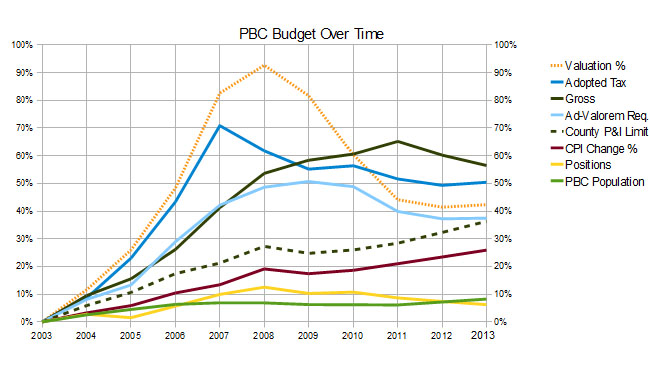
October 1 Forum for County Commission and School Board
Candidate Forum
Join us for an evening of in-depth discussion of county issues with the candidates competing to replace outgoing County Commissioner Karen Marcus and School Board member Monroe Benaim.
Moderated by Steve Rosenblum, former candidate for Florida House and host of the “CRF Radio with Steve and Daria” show on BlogTalkRadio
October 1, 2012
6:00pm buffet ($15), 7:00 Program
Abacoa Golf Club
105 Barbados Drive, Jupiter, Florida 33458
The candidates are:
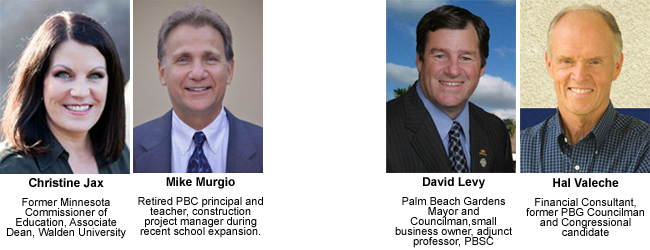
This event is jointly sponsored by:
Palm Beach County Tea Party
South Florida 912

Candidate Biographies

David Levy
Florida native David Levy was born in 1960 and is the owner of environmental engineering firm Southeast Remediation Technnology, and an adjunct professor in environmental geology at Palm Beach State College. He received a B.S in Geology from Florida State University, and a M.S. in Geological Services from Virginia Polytech.
He is currently Mayor of Palm Beach Gardens, and has been a City Councilman since 2004. County-wide, he chairs the League of Cities Environmental Committee, the Regional Hazardous Material Oversight Committee and the Water Resources Task Force, as well as participating with Workforce Alliance, the Biotech Land Advisory Board, and the Loxahatchee River Management Coordinating Council.
David’s campaign issues are streamlining the county permitting process, creating an attractive environment for new businesses, supporting FAU Research Park and additional biotech startups, and protecting the environment, particularly water resources.
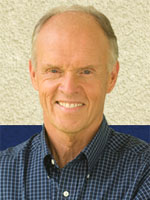
Hal Valeche
Hal Valeche was born in 1948, grew up in New York and received a degree in American Studies from Yale. Joining the Navy flight program during the Vietnam era, he flew 85 combat missions as a fighter pilot off the carrier USS Oriskany. After the Navy, Hal received an MBA in Finance from Wharton and returned to NYC to work as an investment banker for Merrill Lynch. Hal has been a Palm Beach County resident since the early ’90s, and works in venture capital for Carl Domino, Inc.
In 2002 he was elected to the Board of the Northern PBC Improvement District and won a seat on the Palm Beach Gardens City Council in 2004, serving two terms. He also served on the board of the League of Cities, chaired the Consumer Affairs Hearing Board and was active in philanthropic endeavors. In 2008, He ran for Congress in District 16, losing to Tom Rooney in the Republican primary.
Hal is a fiscal conservative and founded the Taxpayer Action Network, a budget watchdog, and has been a participant in the Taxpayer Action Board.
In the 2012 Republican primary, Hal won 67% of the vote, defeating Dan Amero (27%) and Harry Gaboian (6%).
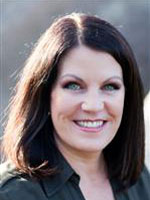
Christina Jax
Christine Jax was born in 1959 and lives in West Palm Beach’s Osprey Isles. She has a PhD in Education policy and Administration from the University of Minnesota, an MA in Public Administration from Hamline University, and a BA in child Psychology, also from U. Minnesota.
She was Minnesota Commissioner of Education under Governor Jesse Ventura and briefly ran for Governor of that state as an Independent Party candidate. She is currently listed on the staff roster of Walden University in Minneapolis, an online university, as Associate Dean, Doctoral Programs.
Ms. Jax has been endorsed by both the PBA and BizPAC. She was the only candidate of the original five to support high stakes testing and believes schools and teachers should be measured.
Her bio is quite extensive, with a significant array of awards won, papers written, and she is nationally known as an education expert.
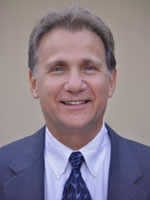
Mike Murgio
Bio provided by candidate:
Mike Murgio was born in 1950 and has been a Palm Beach county resident for 39 years. He has a Masters Degree in Educational Administration and Supervision from Florida Atlantic University and a BA in Education from William Paterson University in New Jersey. He was a teacher, then a school principal for 20 years. Because of his extensive business expertise as a general and roofing contractor he was called on to solve overcrowding in our Schools in the mid 1990’s. As Principal on Special Assignment he managed the departments of Planning & Real Estate, Architect Services, and Facilities & Construction Management with budgets in excess of $170 million and 120 employees. Mike retired from the School District in 2007.
Mike has been endorsed by Palm Beach County’s most highly respected leaders who have worked closely with him for over three decades. To name a few: County Commissioner Karen Marcus; former principal of Suncoast High School, Kay Carnes; David Talley, former Chairman of the North Palm Beach Chamber of Commerce; former principal of Bak Middle School of the Arts and Dreyfoos School of the Arts, Amelia Ostrosky; and former school superintendents Tom Mills and Bill Malone. They know first hand the expertise, quality and commitment he will bring to the school board. When elected Mike will ensure students are the priority.

